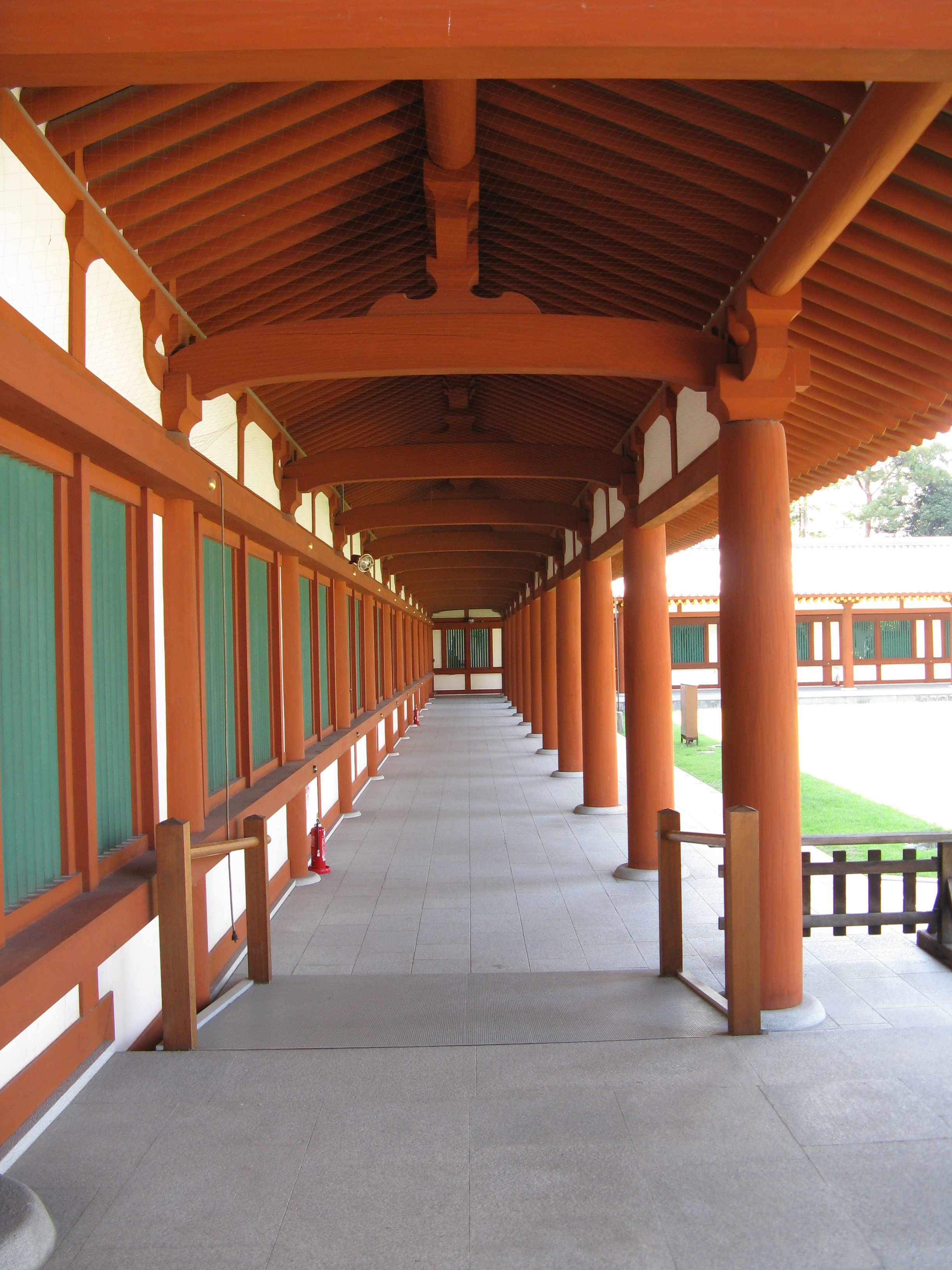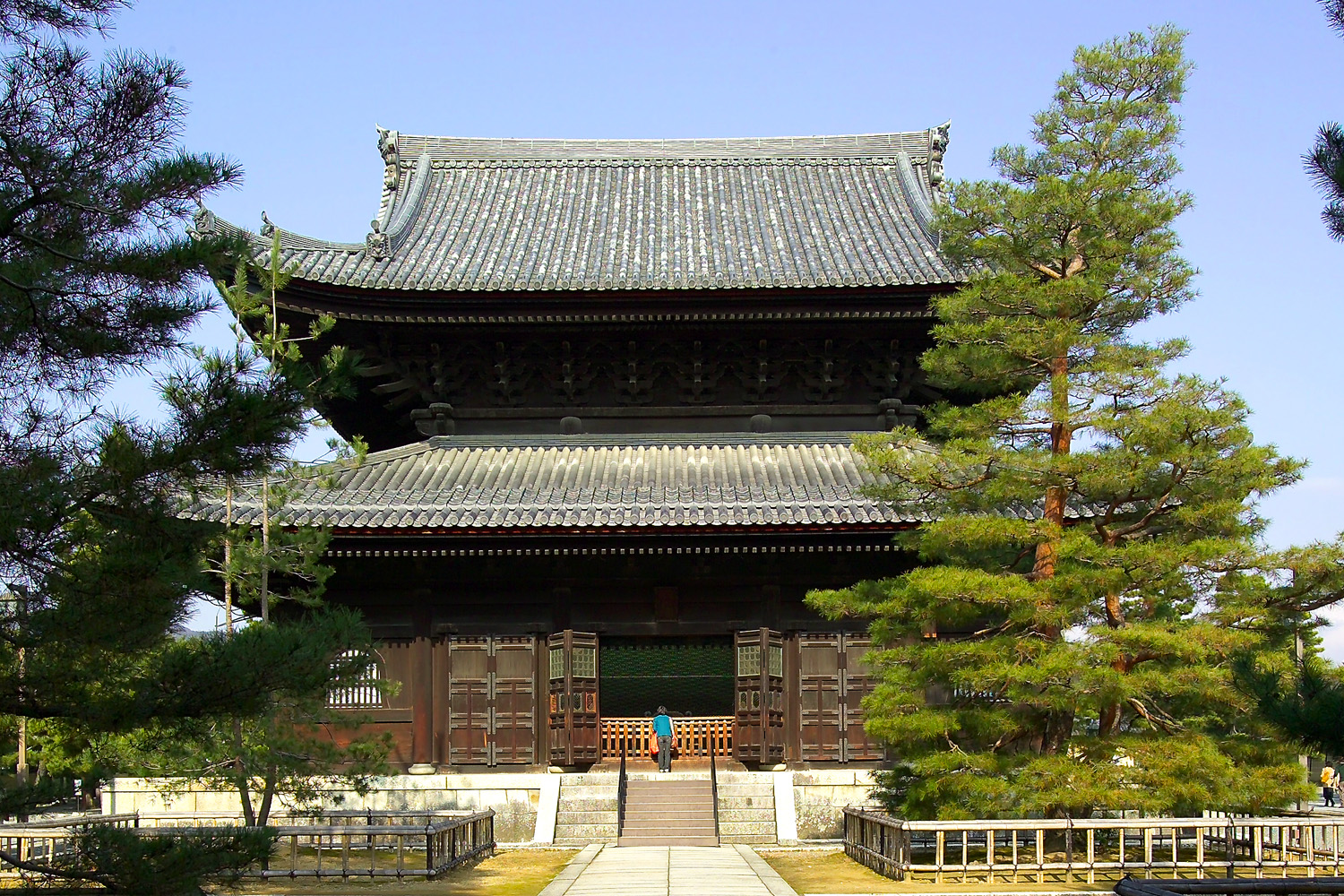|
Tōtōmi Kokubun-ji
The was a Buddhist temple located in the Mitsuke neighborhood of what is now the city of Iwata, Shizuoka, Japan. It was one of the provincial temples established by Emperor Shōmu during the Nara period (710 – 794) for the purpose of promoting Buddhism as the national religion of Japan and standardising control of the imperial rule over the provinces. The original temple no longer exists, but the temple grounds are an archaeological site which was designated as a Special National Historic Site in 1962. The area under protection was expanded in 2012. History The ''Shoku Nihongi'' records that in 741 AD, as the country recovered from a major smallpox epidemic, Emperor Shōmu ordered that a monastery and nunnery be established in every province, the . The Tōtōmi Kokubun-ji site is approximately 1.3 kilometers north from Iwata Station on the Tōkaidō Main Line railway. The nearby area has many ancient ruins, including the site of the provincial capital for Tōtōmi Pr ... [...More Info...] [...Related Items...] OR: [Wikipedia] [Google] [Baidu] |
Iwata, Shizuoka
former Mitsuke School in Iwata is a city located in Shizuoka Prefecture, Japan. , the city had an estimated population of 169,897 in 68,215 households and a population density was 1,000 persons per km2. The total area of the city was . Iwata is widely known as the headquarters of the Yamaha Motor Corporation. Iwata is also home to Júbilo Iwata, a J. League soccer team, as well as Yamaha Jubilo, a rugby team. Geography Iwata is located in southwestern Shizuoka Prefecture, bordered by the Tenryū River to the west and with a small coastline on the Pacific Ocean to the south. Surrounding municipalities *Shizuoka Prefecture ** Fukuroi **Hamamatsu **Mori Demographics Per Japanese census data, the population of Iwata has been increasing over the past 60 years. Climate The city has a climate characterized by hot and humid summers, and relatively mild winters (Köppen climate classification ''Cfa''). The average annual temperature in Iwata is . The average annual rainfall is wit ... [...More Info...] [...Related Items...] OR: [Wikipedia] [Google] [Baidu] |
735–737 Japanese Smallpox Epidemic
The was a smallpox epidemic that afflicted much of Japan. Killing approximately one third (around 1 million individuals) of the entire Japanese population, the epidemic had significant social, economic, and religious repercussions throughout the country. Origins A few decades prior to the outbreak, Japanese court officials had adopted the Chinese policy of reporting disease outbreaks among the general population. This recording practice greatly facilitated the identification of smallpox as the disease that afflicted Japan during the years 735–737. Increased contact and trade between Japan and the Asian mainland, directly and through Korea, had led to more frequent and serious outbreaks of infectious diseases, including smallpox. The smallpox epidemic of 735–737 was recorded as having taken hold around August 735 in the city of Dazaifu, Fukuoka in northern Kyushu. The infection had ostensibly been carried by a shipwrecked Japanese fisherman who had contracted the illness a ... [...More Info...] [...Related Items...] OR: [Wikipedia] [Google] [Baidu] |
Roof Tiles
Roof tiles are overlapping tiles designed mainly to keep out precipitation such as rain or snow, and are traditionally made from locally available materials such as clay or slate. Later tiles have been made from materials such as concrete, glass, and plastic. Roof tiles can be affixed by screws or nail (fastener), nails, but in some cases historic designs utilize interlocking systems that are self-supporting. Tiles typically cover an List of commercially available roofing materials, underlayment system, which seals the roof against water intrusion. Categories There are numerous profiles, or patterns, of roof tile, which can be separated into categories based on their installation and design. Shingle / flat tiles One of the simplest designs of roof tile, these are simple overlapping slabs installed in the same manner as traditional roof shingle, shingles, usually held in place by nails or screws at their top. All forms of slate tile fall into this category. When installed, mos ... [...More Info...] [...Related Items...] OR: [Wikipedia] [Google] [Baidu] |
Kairō
Two examples of ''kairō'' , , is the Japanese version of a cloister, a covered corridor originally built around the most sacred area of a Buddhist temples in Japan, Buddhist temple, a zone which contained the ''Main Hall (Japanese Buddhism), kondō'' and the ''tō''. Nowadays it can be found also at Shinto shrines and at ''shinden-zukuri'' aristocratic residences. The ''kairō'' and the ''rōmon'' were among the most important among the ''garan'' elements which appeared during the Heian period. The first surrounded the holiest part of the ''garan'', while the second was its main exit. Neither was originally characteristic of Shinto shrines, but in time they often came to replace the traditional shrine surrounding fence called ''tamagaki''. The earliest example of a ''kairō''/''rōmon'' complex can be found at Iwashimizu Hachiman-gū, a shrine now but a former .On the subject of shrine-temple complexes, see the article ''Shinbutsu shūgō''. The ''rōmon'' is believed to ha ... [...More Info...] [...Related Items...] OR: [Wikipedia] [Google] [Baidu] |
Japanese Pagoda
Multi-storied pagodas in wood and stone, and a ''gorintō'' Pagodas in Japan are called , sometimes or , and derive historically from the Chinese pagoda, itself an interpretation of the Indian ''stupa''. Like the ''stupa'', pagodas were originally used as reliquaries, but in many cases ended up losing this function. Pagodas are quintessentially Buddhist and an important component of Buddhist temples in Japan, Japanese Buddhist temple compounds but, because until the Shinbutsu bunri, Kami and Buddhas Separation Act of 1868, a Shinto shrine was normally Shinbutsu-shūgō, also a Buddhist temple and vice versa, they are not rare at shrines either. The famous Itsukushima Shrine, for example, has one. After the Meiji Restoration the word ''tō'', once used exclusively in a religious context, came to mean also "tower" in the western sense, as for example in . Of the Japanese pagoda's many forms, some are built in wood and are collectively known as , but most are carved out of ston ... [...More Info...] [...Related Items...] OR: [Wikipedia] [Google] [Baidu] |
Main Hall (Japanese Buddhism)
Main hall or Main Temple is the building within a Japanese Buddhist monastery compound ('' garan'') which enshrines the main object of veneration.Kōjien Japanese dictionary Because the various denominations deliberately use different terms, this single English term translates several Japanese words, among them ''butsuden'', ''butsu-dō'', ''kondō'', ''konpon-chūdō'', and ''hondō''. ''Hondō'' is its exact Japanese equivalent, while the others are more specialized words used by particular sects or for edifices having a particular structure. Kondō (Asuka and Nara periods) The term started to be used during the Asuka and Nara periods. A ''kondō'' is the centerpiece of an ancient Buddhist temple's ''garan'' in Japan. The origin of the name is uncertain, but it may derive from the perceived preciousness of its content, or from the fact that the interior was lined with gold. This is the name used by the oldest temples in the country.Iwanami Nihonshi Jiten A ''kondō'', for exa ... [...More Info...] [...Related Items...] OR: [Wikipedia] [Google] [Baidu] |
Archaeological Excavation
In archaeology, excavation is the exposure, processing and recording of archaeological remains. An excavation site or "dig" is the area being studied. These locations range from one to several areas at a time during a project and can be conducted over a few weeks to several years. Excavation involves the recovery of several types of data from a site. This data includes Artifact (archaeology), artifacts (portable objects made or modified by humans), Feature (archaeology), features (non-portable modifications to the site itself such as post molds, burials, and hearths), Ecofact, ecofacts (evidence of human activity through organic remains such as animal bones, pollen, or charcoal), and archaeological context (relationships among the other types of data).Kelly&Thomas (2011). ''Archaeology: down to earth'' (4th ed.). Belmont, Calif.: Wadsworth, Cengage Learning. Before excavating, the presence or absence of archaeological remains can often be suggested by, non-intrusive remote se ... [...More Info...] [...Related Items...] OR: [Wikipedia] [Google] [Baidu] |
Tōtōmi Province
was a Provinces of Japan, province of Japan in the area of Japan that is today western Shizuoka Prefecture.Louis-Frédéric, Nussbaum, Louis-Frédéric. (2005). "''Tōtōmi''" in . Tōtōmi bordered on Mikawa Province, Mikawa, Suruga Province, Suruga and Shinano Province, Shinano Provinces. Its abbreviated form name was . The origin of its name is the old name of Lake Hamana. History Tōtōmi was one of the original provinces of Japan established in the Nara period under the Taihō Code. The original capital of the province was located in what is now Iwata, Shizuoka, Iwata, and was named Mitsuke – a name which survived into modern times as Mitsuke-juku, a shukuba, post station on the Tōkaidō (road), Tōkaidō. Under the ''Engishiki'' classification system, Tōtōmi was ranked as a "superior country" (上国) in terms of importance, and one of the 16 "middle countries" (中国) in terms of distance from the capital. During the early Muromachi period, Tōtōmi was ruled ... [...More Info...] [...Related Items...] OR: [Wikipedia] [Google] [Baidu] |
Kokufu
were the capitals of the historical Provinces of Japan from the Nara period to the Heian period. History As part of the Taika Reform (645), which aimed at a centralization of the administration following the Chinese model (''ritsuryō''), the ''kokufu'' and with it the office of the Kokushi (official), kokushi, replacing the older ''Kuni no miyatsuko'', developed in the 660s. The ''Wamyō Ruijushō'' (Collection of Japanese Names) from 935 contains the earliest listing of the capitals of the provinces and their location. The location of the original capitals of the 8th and 9th century are not passed down. When during the Muromachi Period, starting in the 14th century, the functions of the kokushi were increasingly transferred to military governors or constables (''shugo''), the provincial governments (''kokuga'') lost their importance. Organisation In the center of the ''kokufu'' lay the provincial government (''kokuga'') with its offices (administration, farming, finance, po ... [...More Info...] [...Related Items...] OR: [Wikipedia] [Google] [Baidu] |
Tōkaidō Main Line
The Tōkaidō Main Line () is one of the most important railway corridors in Japan, connecting the major cities of Tokyo and Kobe via Shizuoka (city), Shizuoka, Nagoya, Kyoto and Osaka. The line, with termini at Tokyo Station, Tokyo and Kōbe Station (Hyogo), Kobe stations, is long, not counting its many freight feeder lines around the major cities. The high-speed Tokaido Shinkansen, Tōkaidō Shinkansen largely parallels the line. The term "Tōkaidō Main Line" is largely a holdover from pre-Shinkansen days; now various portions of the line have different names which are officially used by JR East, JR Central, and JR West. Today, the only daily passenger train that travels the entire length of the line is the combined Sunrise Izumo/Sunrise Seto service which runs overnight. During the day, longer intercity trips using the line require several transfers along the way. The Tokaido Main Line is owned and operated by three Japan Railways Group (JR Group) companies: * East Japan Ra ... [...More Info...] [...Related Items...] OR: [Wikipedia] [Google] [Baidu] |
Iwata Station (Shizuoka)
270px, Platform is a railway station in the city of Iwata, Shizuoka, Japan, operated by Central Japan Railway Company (JR Tōkai). It is also a freight depot for the Japan Freight Railway Company (JR Freight). Lines Iwata Station is served by the Tōkaidō Main Line, and is located 245.9 kilometers from the starting point of the line at Tokyo Station. Station layout The station has a side platform serving Track 1, which is an infrequently used auxiliary platform, and an island platform serving Track 2 and Track 3. The two platforms are connected by a footbridge. The station building has automated ticket machines, TOICA automated turnstiles and a staffed ticket office. Platforms Adjacent stations , - !colspan=5, Central Japan Railway Company History Iwata Station was built as on April 16, 1889, when the section of the Tōkaidō Main Line connecting Shizuoka with Hamamatsu was completed. It was renamed “Iwata Station” on October 10, 1942. The station building was ... [...More Info...] [...Related Items...] OR: [Wikipedia] [Google] [Baidu] |
Harvard University Press
Harvard University Press (HUP) is an academic publishing house established on January 13, 1913, as a division of Harvard University. It is a member of the Association of University Presses. Its director since 2017 is George Andreou. The press maintains offices in Cambridge, Massachusetts, near Harvard Square, and in London, England. The press co-founded the distributor TriLiteral LLC with MIT Press and Yale University Press. TriLiteral was sold to LSC Communications in 2018. Notable authors published by HUP include Eudora Welty, Walter Benjamin, E. O. Wilson, John Rawls, Emily Dickinson, Stephen Jay Gould, Helen Vendler, Carol Gilligan, Amartya Sen, David Blight, Martha Nussbaum, and Thomas Piketty. The Display Room in Harvard Square, dedicated to selling HUP publications, closed on June 17, 2009. Related publishers, imprints, and series HUP owns the Belknap Press imprint (trade name), imprint, which it inaugurated in May 1954 with the publication of the ''Harvard Guide to ... [...More Info...] [...Related Items...] OR: [Wikipedia] [Google] [Baidu] |






